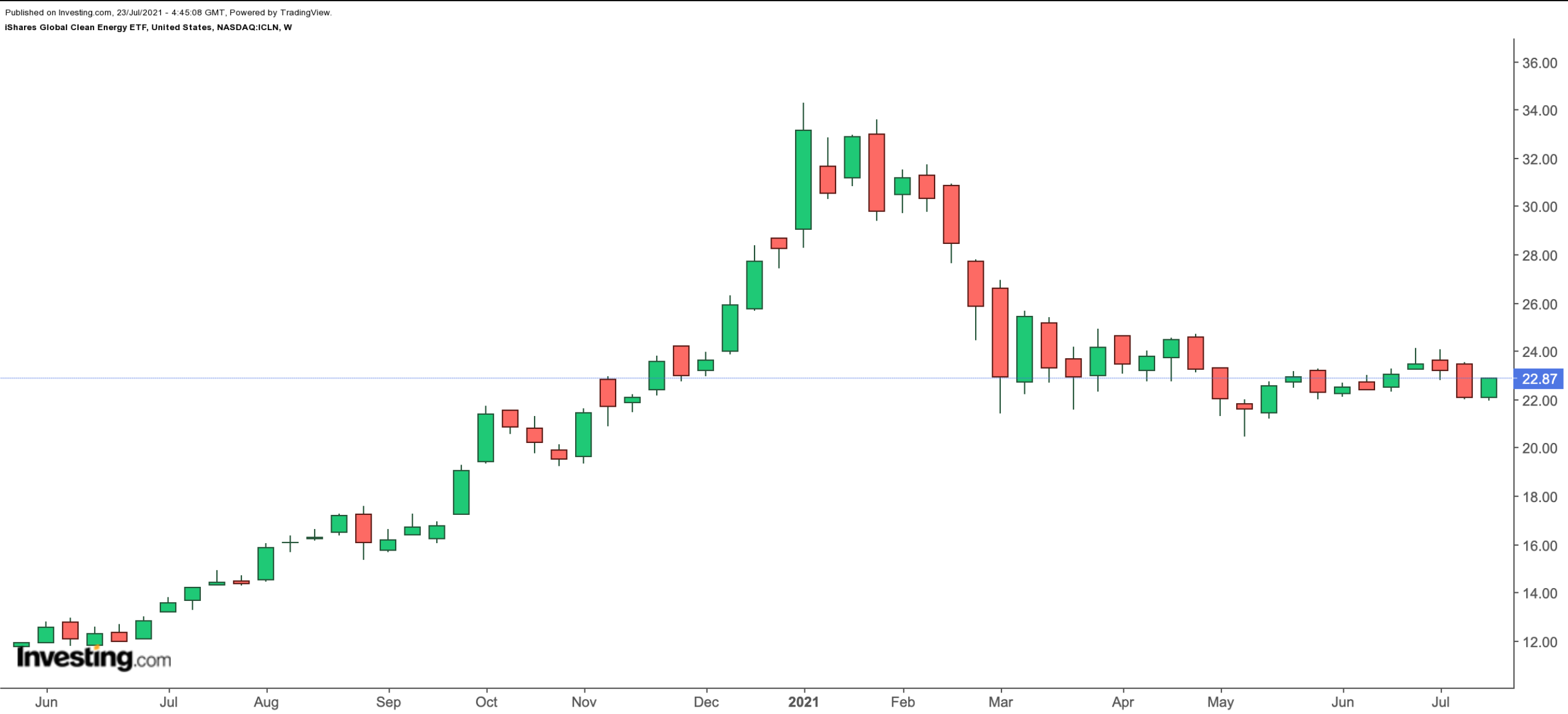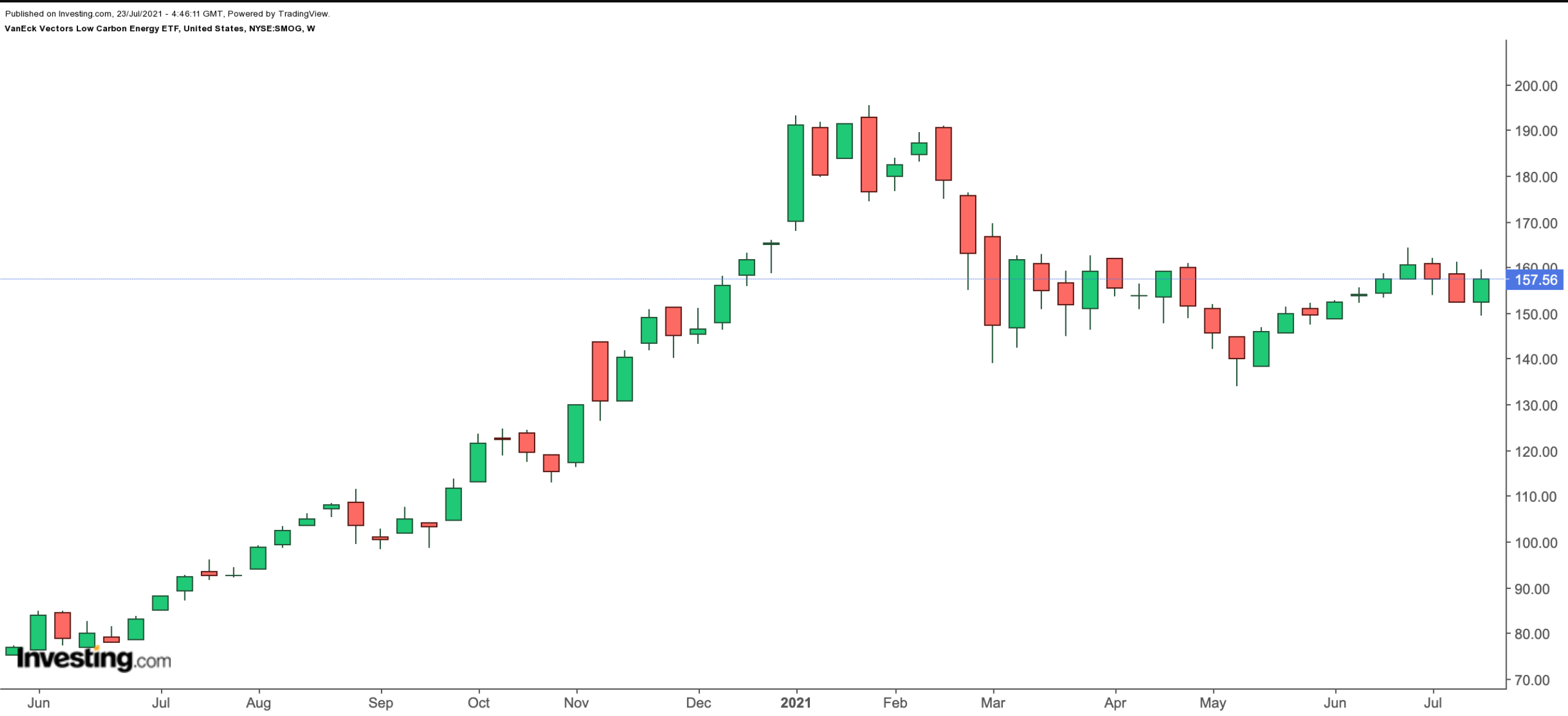Renewable energy sources include solar, wind, hydropower, geothermal and biomass energy, a “renewable organic material that comes from plants and animals.” In 2020, the top primary energy types used in the US were: petroleum (35%), natural gas (34%), renewable energy (12%), coal (10%) and nuclear electric power (9%).
The International Energy Agency (IEA) highlights:
“Renewable electricity generation in 2021 is set to expand by more than 8%…. Solar PV and wind are set to contribute two-thirds of renewables growth.”
China is the largest contributor to this growth, followed by the US, Japan, the UK, India and Germany.
In fact, more than a third of the growth in the next five years will likely come from China. Readers might be interested to learn that in 2018, Apple (NASDAQ:AAPL) launched an investment fund in China to connect suppliers with renewable energy sources. Together, they will aim to jointly invest nearly $300 million into the China Clean Energy Fund over four years.
Meanwhile, the Biden administration is working to increase the uptake of renewable energy and boost clean energy industries. In addition to friendly governmental policies, analysts note that as production capacity worldwide expands, the cost of renewable energy goes down.
Given the favourable economics, the share of alternative energy sources in the power sector will continue to go up. And stocks with successful business models that compete with fossil fuel energy groups will get increased attention.
Today, we introduce two niche exchange-traded funds (ETF) that focus on renewable energy sources.
1. iShares Global Clean Energy ETF
- Current Price: $22.87
- 52-Week Range: $13.95 – $34.25
- Dividend Yield: 0.67%
- Expense Ratio: 0.42% per year
The iShares Global Energy ETF (NASDAQ:ICLN) invests in global renewable energy businesses. The fund started trading in June 2008.

ICLN has 85 holdings, and tracks the returns of the S&P Global Clean Energy Index.
In terms of country allocation, the US tops the list with 38.36%, followed by Denmark (15.01%), China (7.01%) and Canada (6.446%). The top four sectors of the fund include electric utilities (35.97%), heavy electrical equipment (14.83%), semiconductor equipment (13.72%) and renewable electricity (13.76%).
The fund's net assets are close to $6.1 billion, with the 10 largest holdings constituting more than 47% of that figure. Among the leading names in the roster are Vestas Wind Systems (OTC:VWSYF), Orsted (OTC:DOGEF), Enphase Energy (NASDAQ:ENPH), Nextera Energy (NYSE:NEE) and Xcel Energy (NASDAQ:XEL).
So far this year, ICLN is down 29%. However, over the past 52 weeks it is up 55% and hit an all-time high in January. Trailing P/E and P/B ratios are 25.72 and 2.98, respectively. Buy-and-hold investors who are interested in global clean energy could find value around these levels.
2. VanEck Vectors Low Carbon Energy ETF
- Current Price: $157.56
- 52-Week Range: $91.72 – $195.55
- Dividend Yield: 0.06%
- Expense Ratio: 0.62% per year
The VanEck Vectors Low Carbon Energy ETF (NYSE:SMOG) also provides exposure to global firms in the alternative energy space.

SMOG has 71 holdings, and follows the returns of the Ardour Global Extra Liquid Index. In terms of country allocation, the US has the largest slice (31.22%), followed by China (20.33%), Denmark (9.70%) and Italy (7.14%).
Among the leading sectors are utilities (35.0%), consumer discretionaries (25.8%) and industrials (22.4%). The top 10 stocks make up almost 55% of net assets, which stand at $304.1 million.
Electric vehicle makers Tesla (NASDAQ:TSLA), Nio (NYSE:NIO), Li Auto (NASDAQ:LI) and Xpeng (NYSE:XPEV) comprise more than 22% of the fund. This means that short-term price moves in these car manufacturers are likely to affect the ETF as well.
SMOG holds some of the same firms as ICLN, including Nextera Energy, Vestas Wind Systems and Orsted.
Year-to-date, SMOG is down to almost 5%. But, like ICLN, it hit a record high in January and has returned 68% in the past 12 months. Trailing P/E and P/B ratios are 37.18 and 4.11, respectively. Readers who are following the transition away from traditional energy sources toward renewable energy should consider buying the dips in SMOG
